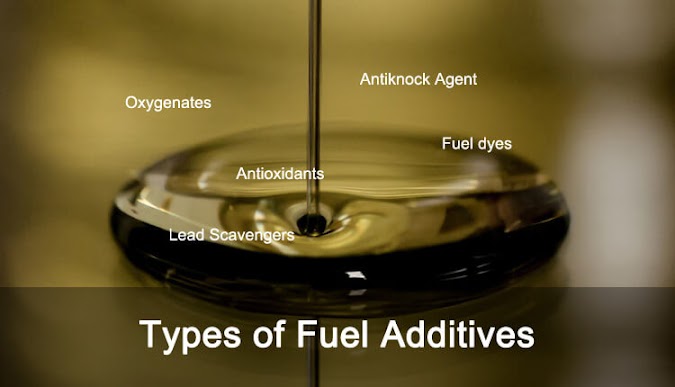Additives In Petrol, Different Types of Fuel Additives and Their Effects
🔗What are fuel additives? Advantages of fuel additives
Oxygenates
The oxygenate additives contain oxygen in their chemical structure. These compounds increase the oxygen content of the fuel and optimize the combustion process. They reduce soot and carbon monoxide produced by combustion of fuel. The common oxygenates are divided into two subgroups alcohols, and ethers.Alcohols - methanol, ethanol, n-Butanol
Ethers - methyl tert-butyl ether (MTBE), ethyl tert-butyl ether (ETBE), tert-Amyl methyl ether (TAME).
Antiknock Agent
Antiknock agents are added to reduce the problem of engine knocking. They can increase the octane number of fuels. Typical antiknock agents are toluene, ferrocene, tetraethyl lead, and isooctane.Antioxidants
They inhibit oxidation and provide stability in fuel burning. They prevent decomposition of lubricant. These additives terminate the free radical chain reaction. To do so, they are generally reducing agents.E.g. ethylene diamine, butylated hydroxytoluene (BHT)
Lead Scavengers
These additives are used for leaded gasoline. Lead is a toxic element. Lead scavengers eliminate the problem of lead in the exhaust gas.E.g. Tricresyl phosphate (TCP)
Fuel dyes
In some countries fuel dyes are required by law. The reason for dying fuel is to avoid theft, laundering, and collect fuel taxes. Usually, clear fuel is taxed and sold to public for on-road vehicles while colored fuel is non-taxed and sold for an application like farming equipment, construction equipment. The dyes are soluble, and they never cause any kind of loss in performance.Aviation gasoline is dyed for safety purpose (identifying and distinguishing fuel grades then avoid wrong fueling)
E.g. solvent red 24, solvent blue 36


